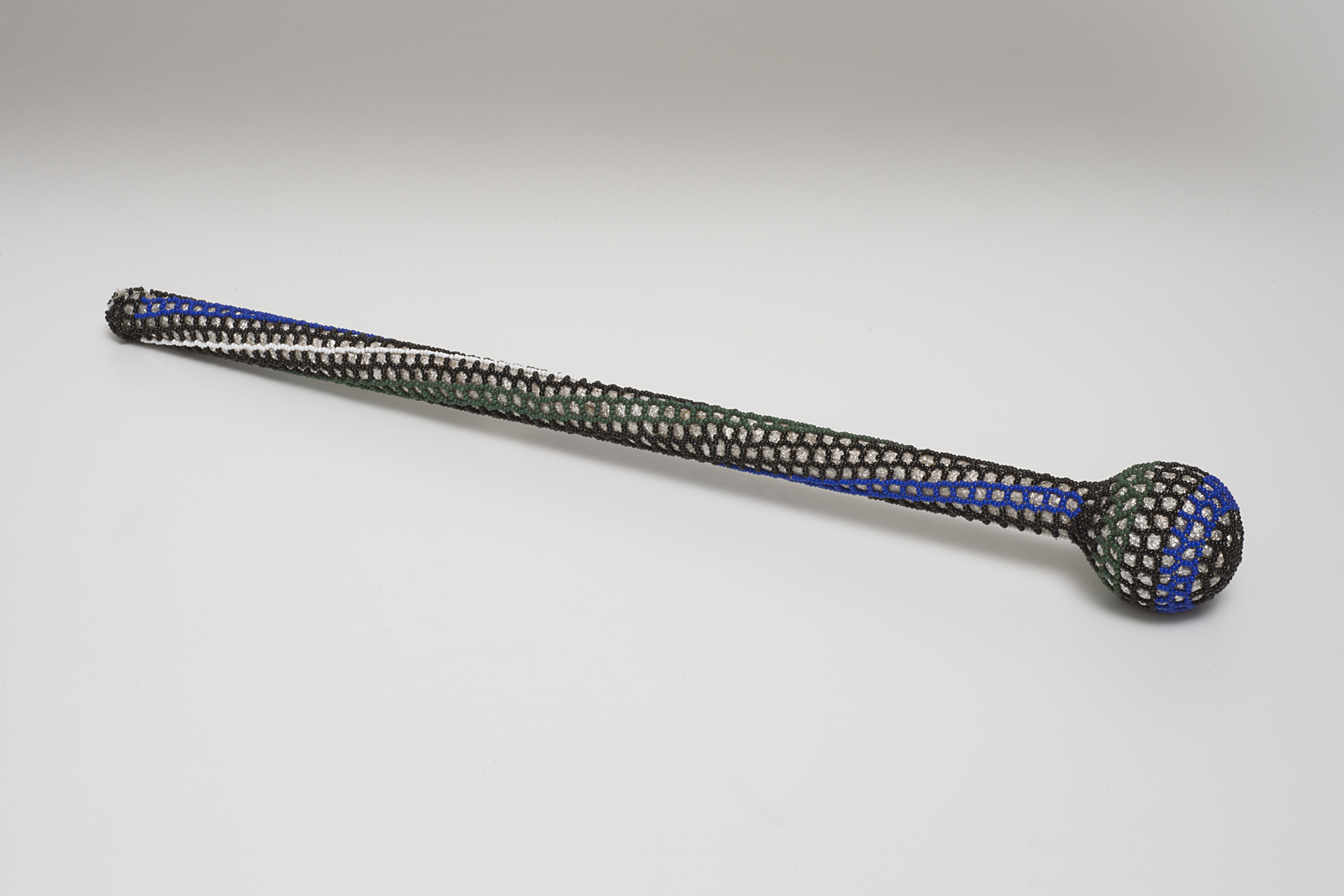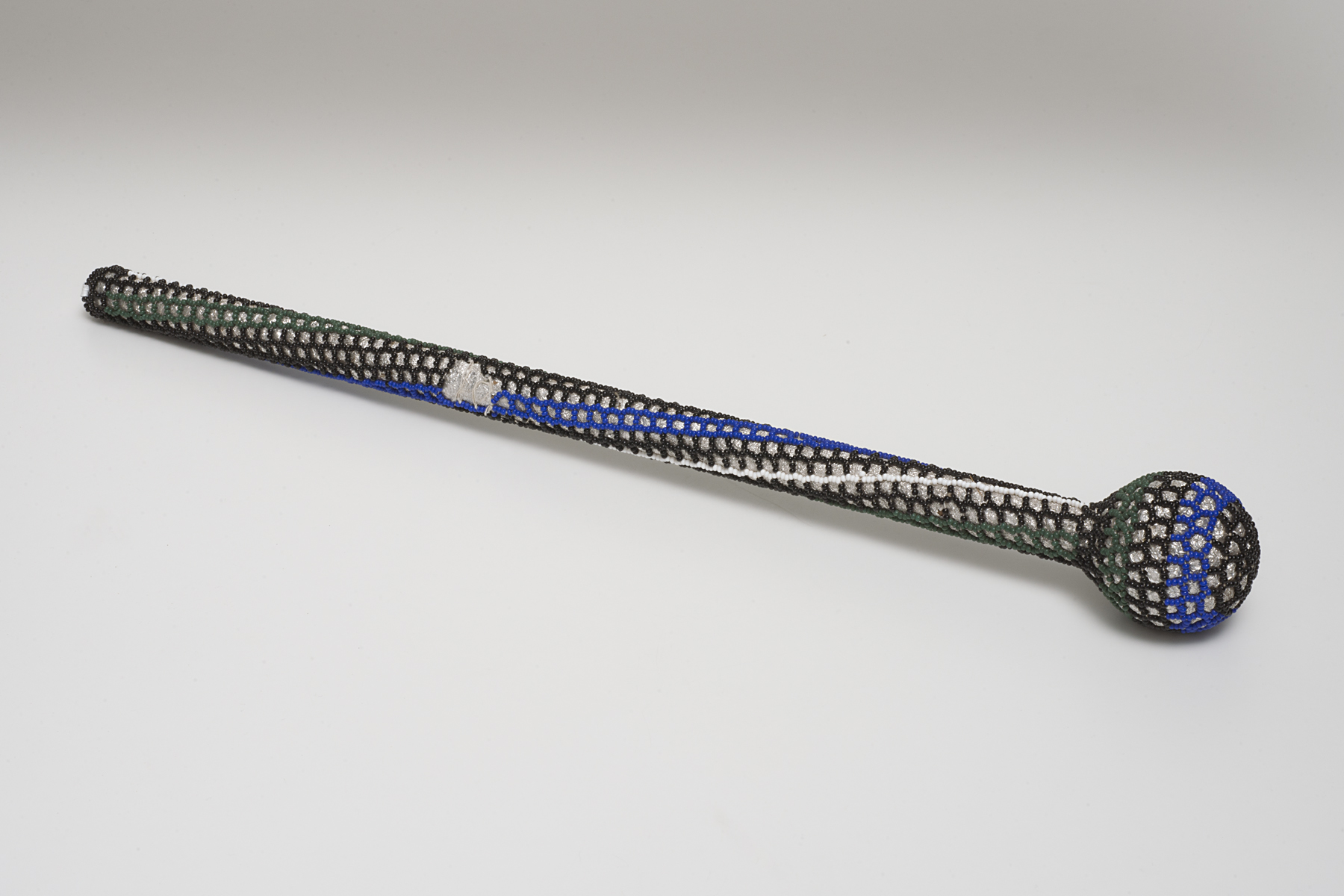dondolo (dancing stick), unrecorded Ndebele artist
Artwork Overview
unrecorded Ndebele artist, artist
dondolo (dancing stick),
1960–1982
Where object was made: Transvaal Province, Union of South Africa (present-day Mpumalanga province, South Africa)
Material/technique: carving; foil; beading; wood
Dimensions:
Object Length/Diameter (Length x Diameter): 63 x 7 cm
Object Length/Diameter (Length x Diameter): 24 13/16 x 2 3/4 in
Object Length/Diameter (Length x Diameter): 63 x 7 cm
Object Length/Diameter (Length x Diameter): 24 13/16 x 2 3/4 in
Credit line: Gift of Reinhild Janzen
Accession number: 2007.1150
Not on display
If you wish to reproduce this image, please submit an image request









